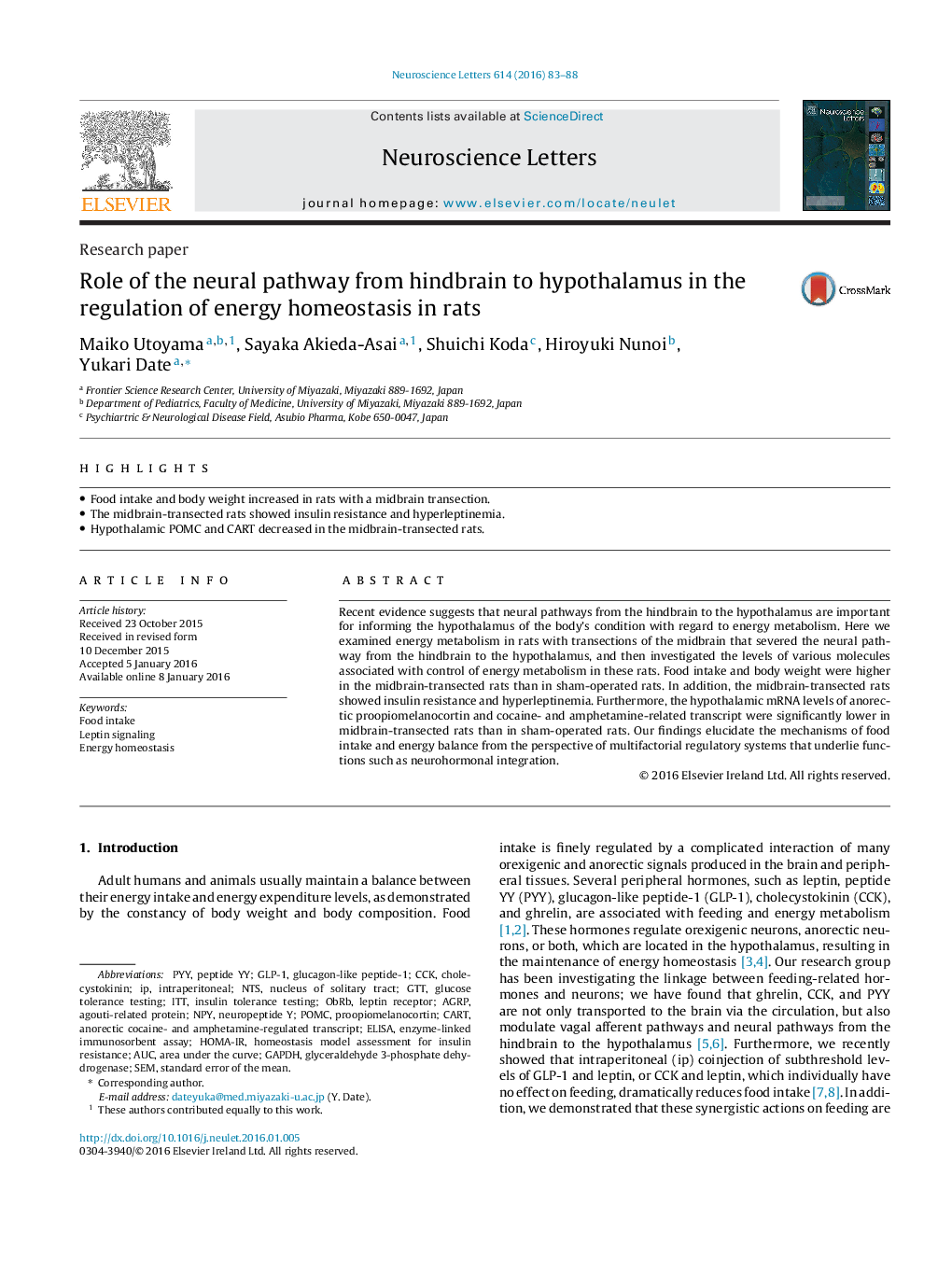| Article ID | Journal | Published Year | Pages | File Type |
|---|---|---|---|---|
| 6280166 | Neuroscience Letters | 2016 | 6 Pages |
Abstract
Recent evidence suggests that neural pathways from the hindbrain to the hypothalamus are important for informing the hypothalamus of the body's condition with regard to energy metabolism. Here we examined energy metabolism in rats with transections of the midbrain that severed the neural pathway from the hindbrain to the hypothalamus, and then investigated the levels of various molecules associated with control of energy metabolism in these rats. Food intake and body weight were higher in the midbrain-transected rats than in sham-operated rats. In addition, the midbrain-transected rats showed insulin resistance and hyperleptinemia. Furthermore, the hypothalamic mRNA levels of anorectic proopiomelanocortin and cocaine- and amphetamine-related transcript were significantly lower in midbrain-transected rats than in sham-operated rats. Our findings elucidate the mechanisms of food intake and energy balance from the perspective of multifactorial regulatory systems that underlie functions such as neurohormonal integration.
Keywords
PYYObRbCARTGLP-1GAPDHNTSGTTHOMA-IRNPYAgRPPOMCCCKAUCGlucose tolerance testinghomeostasis model assessment for insulin resistanceITTEnzyme-linked immunosorbent assayELISAstandard error of the meanintraperitonealleptin signalingSEMfood intakearea under the curveNucleus of solitary tractEnergy homeostasisAgouti-related proteinproopiomelanocortinglucagon-like peptide-1peptide YYcholecystokininglyceraldehyde 3-phosphate dehydrogenaseLeptin receptorNeuropeptide Y
Related Topics
Life Sciences
Neuroscience
Neuroscience (General)
Authors
Maiko Utoyama, Sayaka Akieda-Asai, Shuichi Koda, Hiroyuki Nunoi, Yukari Date,
